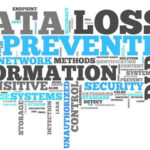In the ever-connected digital world, where data flows like an invisible river, the concept of confidentiality in cybersecurity takes center stage. It represents one of the three fundamental pillars of information security, along with integrity and availability. Let’s dive into the realm of confidentiality, exploring its importance and the techniques employed to safeguard our most sensitive digital assets.
Defining Confidentiality:
Confidentiality in cybersecurity is the assurance that sensitive information remains private and accessible only to authorized individuals or systems. It is about preserving the secrecy and exclusivity of data, ensuring that it doesn’t fall into the wrong hands.
The Significance of Confidentiality:
- Protection Against Unauthorized Access: Confidentiality acts as a guardian against unauthorized access. It ensures that classified information, personal records, financial data, and intellectual property remain out of reach for cybercriminals.
- Preserving Trust: In an age where individuals and organizations share sensitive information online, maintaining confidentiality is vital for preserving trust. Clients, customers, and partners need to know their data is secure.
- Legal Compliance: Many industries have strict regulations regarding the protection of sensitive data. Confidentiality measures are critical for legal compliance and avoiding hefty fines.
Techniques for Upholding Confidentiality:
- Encryption: Encryption is the cornerstone of confidentiality. It transforms data into an unreadable format, which can only be deciphered with the right cryptographic key. Whether data is at rest or in transit, encryption is a potent defense.
- Access Controls: Access controls restrict who can view or modify data. These can include user authentication, authorization policies, and role-based access controls.
- Secure Communication Protocols: Secure communication protocols like HTTPS, SSL/TLS, and VPNs encrypt data during transmission, preventing eavesdropping and interception.
- Data Classification: Not all data is equally sensitive. Data classification helps identify what information is confidential and what is not, allowing for tailored protection.
- Regular Auditing and Monitoring: Consistent monitoring and auditing of systems can detect and alert to any unauthorized access attempts, ensuring confidentiality is maintained.
Challenges and Evolving Threats:
Maintaining confidentiality is not without challenges. Evolving threats such as phishing, social engineering, and advanced persistent threats (APTs) pose substantial risks. Additionally, accidental data exposure due to misconfigurations is a common challenge.
Conclusion:
Confidentiality in cybersecurity is not just about keeping secrets; it’s about safeguarding trust and preserving the integrity of data. In a digital landscape filled with threats, the commitment to confidentiality is a beacon of assurance, reassuring individuals and organizations that their most valuable information remains safe and secure. As we journey deeper into the digital age, this commitment to confidentiality will continue to be a linchpin in our digital security efforts, allowing us to explore the boundless potential of the internet with confidence and peace of mind.



Leave a Reply